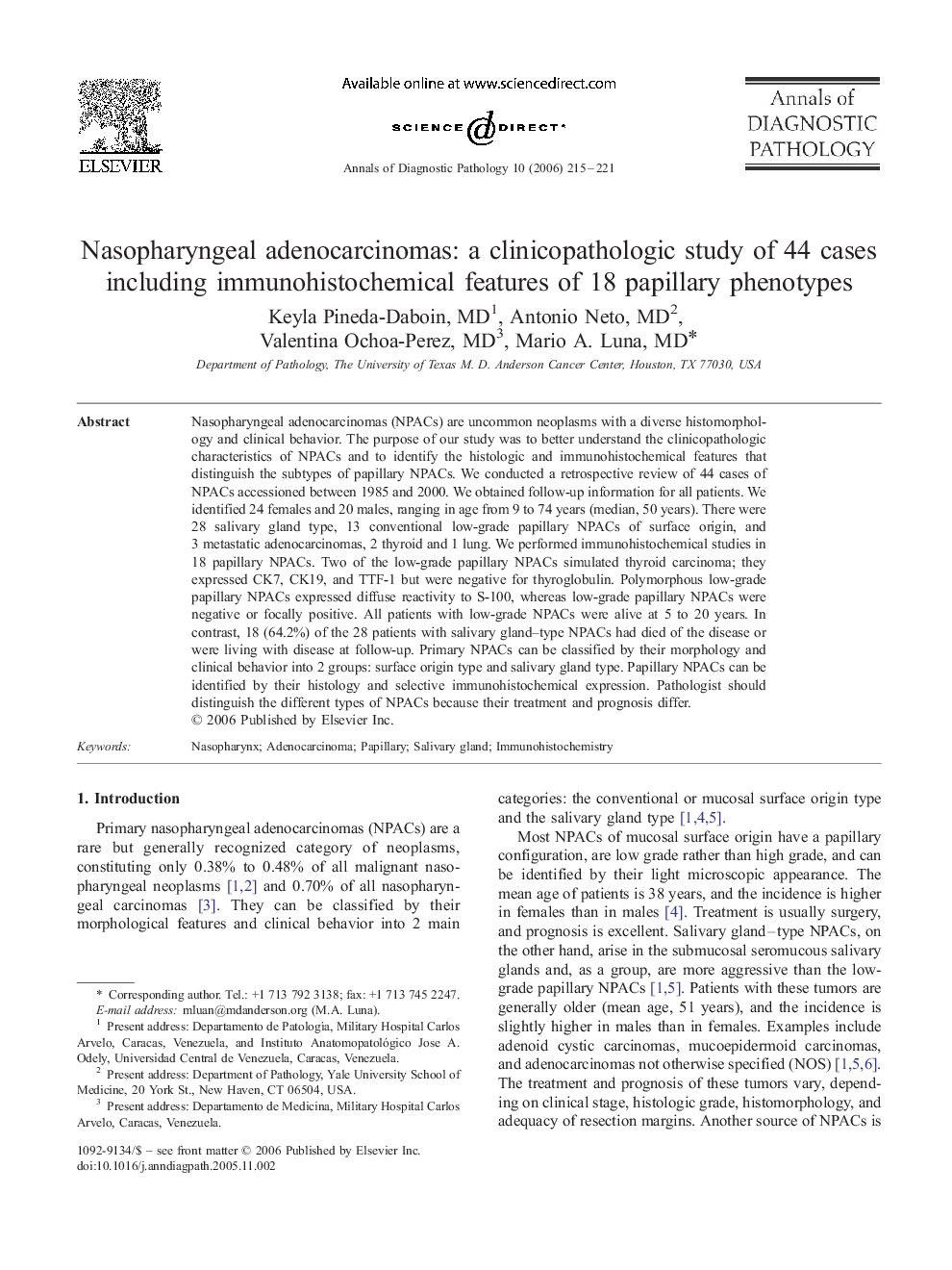| Article ID | Journal | Published Year | Pages | File Type |
|---|---|---|---|---|
| 4130741 | Annals of Diagnostic Pathology | 2006 | 7 Pages |
Nasopharyngeal adenocarcinomas (NPACs) are uncommon neoplasms with a diverse histomorphology and clinical behavior. The purpose of our study was to better understand the clinicopathologic characteristics of NPACs and to identify the histologic and immunohistochemical features that distinguish the subtypes of papillary NPACs. We conducted a retrospective review of 44 cases of NPACs accessioned between 1985 and 2000. We obtained follow-up information for all patients. We identified 24 females and 20 males, ranging in age from 9 to 74 years (median, 50 years). There were 28 salivary gland type, 13 conventional low-grade papillary NPACs of surface origin, and 3 metastatic adenocarcinomas, 2 thyroid and 1 lung. We performed immunohistochemical studies in 18 papillary NPACs. Two of the low-grade papillary NPACs simulated thyroid carcinoma; they expressed CK7, CK19, and TTF-1 but were negative for thyroglobulin. Polymorphous low-grade papillary NPACs expressed diffuse reactivity to S-100, whereas low-grade papillary NPACs were negative or focally positive. All patients with low-grade NPACs were alive at 5 to 20 years. In contrast, 18 (64.2%) of the 28 patients with salivary gland–type NPACs had died of the disease or were living with disease at follow-up. Primary NPACs can be classified by their morphology and clinical behavior into 2 groups: surface origin type and salivary gland type. Papillary NPACs can be identified by their histology and selective immunohistochemical expression. Pathologist should distinguish the different types of NPACs because their treatment and prognosis differ.
